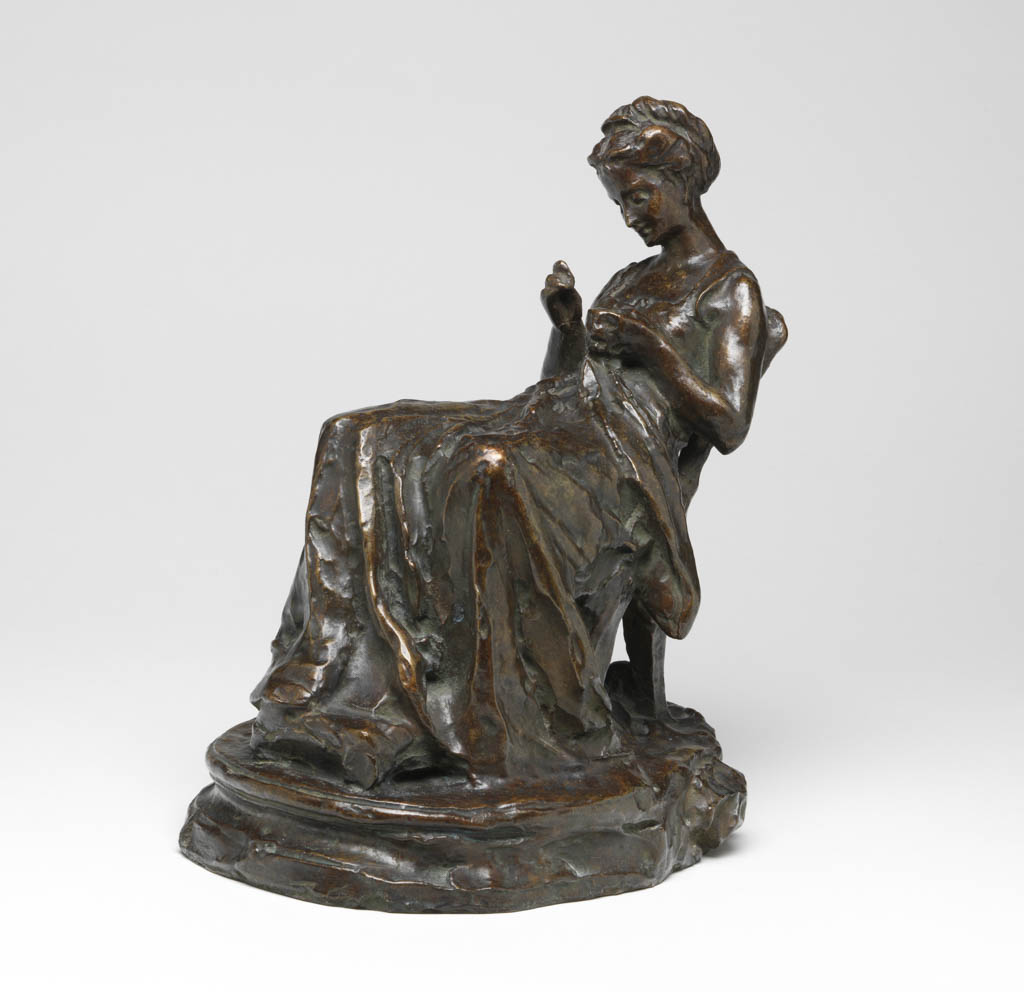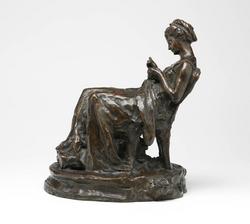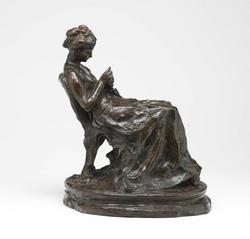Current Location: In storage
Titles
La Brodeuse
Translated as: The Embroiderer
(The Embroiderer)
Maker(s)
Sculptor:
Dalou, Aimé-Jules
Entities
Categories
Description
Seated figure of a woman, sewing
Legal notes
Sir Ivor and Lady Batchelor Bequest through The Art Fund
Measurements and weight
Weight: 12.02 kg
Acquisition and important dates
Method of acquisition: Bequeathed
(2015-04-27)
by
Batchelor, Ivor, Sir and Lady
Dating
20th Century
Production date:
after
AD 1902
: Original model: c.1870. This bronze cast after 1902.
Note
A protégé of the French sculptor, Jean-Baptiste Carpeaux (1827-75), Dalou was one of the great French sculptors of the nineteenth century. He trained at the Petite École (1852-4) and then at the École des Beaux-Arts, Paris. La Brodeuse was Dalou’s professional breakthrough work. In 1870 he submitted a life-sized plaster model to the Paris Salon for which he was awarded a third class medal: his first official honour. The depiction of an anonymous, casually-clothed woman absorbed in an everyday task was considered a radical, highly modern sculptural subject at the time - traditional Academic sculpture favoured the portrayal of women as idealised heroines from ancient history, mythology or Christianity. The French State bought the model for 3,000 francs with the expectation that Dalou would reproduce it in marble, but events set in train later that year by the Franco-Prussian War and the Paris Commune of 1871 meant that this never happened. Although Dalou destroyed the original plaster in 1870, a plaster cast of a small preliminary model survives (Petit Palais, Paris, no. PPS1271), as does a bronze reduction of the final model (Staatliche Kunsthalle, Karlsruhe, no. P 169). Dalou was greatly concerned to oversee every aspect of the production of his work, and this also applied to works cast in bronze. He disapproved of the industrial process of sand-casting and always stipulated that his work be cast using the lost-wax casting method, even for large-scale bronzes. In his will, Dalou left instructions that the contents of his studio be sold for the benefit of the Orphelinat des Arts, a school founded in 1880 by Marie Laurent and Sarah Bernhardt to educate the children of artists working in all fields of the arts. This was on condition that the school care for his intellectually-disabled daughter, Georgette, after his death. Dalou’s executors decided to produce limited editions of certain of his models, giving foundries such as Susse and Hébrard (who also worked for Rodin and Degas' heirs) permission to cast them, with the proceeds of the reproduction rights going to the Orphelinat. The posthumous casts of Dalou's models proved so popular that by the end of 1932, the profits came to 600,000 francs. The present bronze is number 7 of a series of 12 cast by the Valsuani foundry, Paris.
School or Style
French
Components of the work
Figure
Height 28 cm
Length 24.6 cm
Width 17.9 cm
Base
Height 3.9 cm
Length 23.4 cm
Width 17.9 cm
Materials used in production
Copper alloy
Bronze
Techniques used in production
Casting (process)
: Bronze, cast, patinated
Patination
Inscription or legends present
- Text: "DALOU" 7/12
- Location: Rear top of base
- Text: "CIRE / G VALSUANI / PERDUE"
- Location: Back side of base
References and bibliographic entries
Related exhibitions
Identification numbers
Accession number: M.21-2015
Primary reference Number: 201930
Old object number: 10
Stable URI
Audit data
Created: Thursday 25 June 2015
Updated: Monday 29 April 2024
Last processed: Wednesday 14 May 2025
Associated departments & institutions
Owner or interested party:
The Fitzwilliam Museum
Associated department:
Applied Arts

 IIIF Manifest
IIIF Manifest








